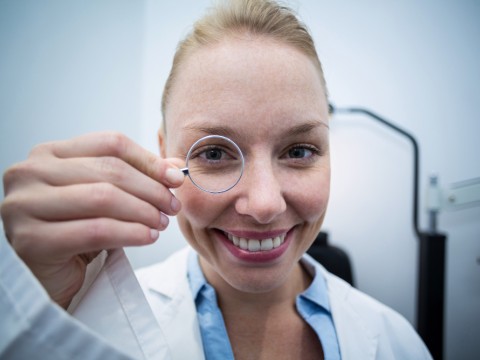Quote of Dünyagöz
Enucleation with a Mobile Implant: The Modern Face of Eye Prosthetics
Mobile implant enucleation is a surgical intervention for people who have to have one eye removed due to trauma, a disease, or malignancy of the intraorbital contents. The surgery involves removing the eyeball and placing a mobile implant inside the orbit. It acts as a base with which the prosthetic eye can work effectively. This is performed for the restoration of both function and cosmetic appearance and helps make the patient confident and better as regards quality of life.
The Surgery: How Does Enucleation Work?
Most enucleation surgeries are performed under general anesthesia; the surgeon then removes the globe with caution while trying to preserve as much of the surrounding tissue as possible, including the lids and muscles. A mobile implant is commonly placed into the socket after enucleation; this is usually made of highly biocompatible materials, such as silicone. Such an implant approximates the size and shape of a normal eye internally and provides a base to which a prosthetic eye can be attached.
The mobile implant is usually articulated to move with the natural eye muscles, enhancing the cosmetic result and adding to the normalcy of the look as one blinks or gazes in various directions. The prosthetic eye is custom-painted to match the color of the remaining eye and to assure a natural and realistic fit.
Benefits of Mobile Implant Enucleation
It may be mentioned that the primary good provided to patients with the loss of a mobile implant enucleated eye is their appearance and functions. A great improvement in face aesthetics and development in self-esteem results from the facility offered by the implanted mobile for action of the artificial eye. Secondly, it has implanted to help hold the volume of the socket or the shape by preventing the various changes that generally take place over time after loss of an eye.
Besides, mobile implants are comfortable and can be easily adjusted for the satisfaction of the patients, unlike the discomfort brought about by earlier methods of enucleation.
Recovery and Aftercare
Generally, it takes several weeks to recover from mobile implant enucleation. During this time in recovery, the patient will have to follow some after-surgery rules of care in order to prevent further complications such as infection or implant rejection. Follow-up visits to the ophthalmologist will be frequent to check on the healing and ensure proper positioning of the prosthetic eye. Once the socket has healed, a custom prosthetic eye is created and fitted.
Mobile implant enucleation is, in sum, an effective and advanced way of restoring both the appearance and function of an eye after trauma or disease. It offers more comfort, aesthetic results, and confidence to patients.
- Health Insurance
-
Accommodation
- Online Healthy Life Assistant 9/5
- Post - Experience Follow Up 6 Month
-
Extra Privileges
- Transfer

- Health Insurance
-
Accommodation
- Online Healthy Life Assistant 24/7
- Post - Experience Follow Up 1 Year
-
Extra Privileges
- Pre-Treatment Doctor Consultation
- Transfer

 Private
Private
- Health Insurance
- Healthy Life Butler
- Post - Experience Follow Up 2 Year
- World-Famous Doctor Consultation
-
Extra Privileges
No suitable hotel found for the relevant dates!
* Price varies depending on extra and upgrade selections.
Individuals with aesthetic concerns related to the eyes, such as droopy eyelids, bags under the eyes, or issues affecting the eye's function, may be suitable candidates for Oculoplasty. A thorough evaluation by an oculoplastic surgeon is necessary to determine eligibility.
Common Oculoplasty procedures include eyelid surgery (blepharoplasty), ptosis repair (correction of droopy eyelids), tear duct surgery, orbital fracture repair, and treatments for various eyelid and orbital tumors.
No, Oculoplasty addresses both cosmetic and functional concerns. While some procedures aim to improve the aesthetic appearance of the eyes, others focus on correcting functional issues, such as impaired vision due to eyelid abnormalities.
Recovery time varies depending on the specific procedure performed. Generally, patients may experience swelling and bruising for the first week, with gradual improvement over several weeks. The surgeon will provide personalized post-operative care instructions.




